The Welsh Corgi Cardigan is a small shepherd dog with an elongated body and short, strong legs, which has a strong external resemblance to the Pembroke Welsh Corgi. The breed was bred in England, has a calm and benevolent character.
Welsh Corgi Cardigan is a modest native of Wales, who since ancient times earned his plate of stew by grazing cattle and has not lost his working qualities to this day. Good-natured and non-conflicting, this artistic handsome man willingly makes contact, but at the same time does not suffer from excessive obsession. As befits a real shepherd dog, the welsh corgi cardigan is endlessly loyal to the owner and very bored if he is forced to lose his company for a while. Moreover, Cardi is an extremely inquisitive and sociable “guy” who manages to make friends even during a normal walk.
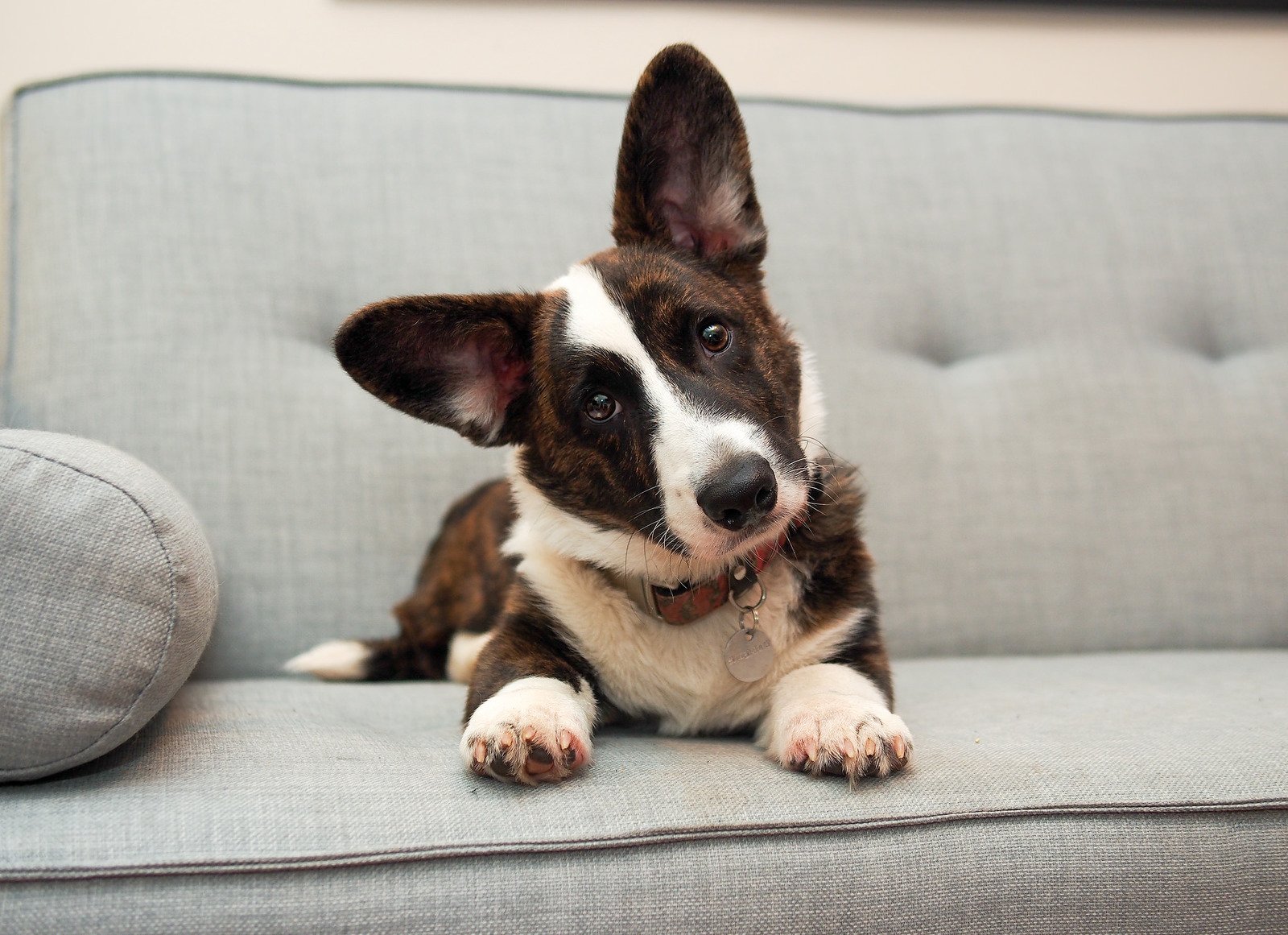
The history of the Welsh Corgi breed is a few hypotheses, a lot of speculation, a couple of legends, and almost no reliable fact. For example, some experts believe that the ancestors of today’s dogs appeared in the British Isles along with the Scandinavian settlers in the Bronze Age. Others attribute animal breeding to the Celts who inhabited England around 1500 BC. e.
With the genetic base, too, not everything is clear, so someone calls the ancestors of the Welsh Corgi Icelandic dogs, and someone refers them to the descendants of the Swedish Vallhund. However, the Welsh would not have been Welsh if they had not given this phenomenon their own, purely mystical justification. In the homeland of the breed, it is still believed that the Welsh Corgi gave the inhabitants of Wales fabulous creatures (fairies) who used animals like horses, riding them, and transporting their own belongings with their help.
As for the cardigan welsh corgi specifically, this branch was born through the efforts of enthusiasts in the Welsh county of Cardiganshire (Ceredigion). It is believed that to breed an unassuming shepherd dog, local farmers crossed the ancestors of the Welsh Corgi with dachshund dogs, which greatly affected the exterior of the animals. In particular, the body of the shepherd dogs has become longer, and their legs are significantly shorter.
The appearance of the Pembroke Welsh Corgi breed in the 13th century sharply reduced the popularity of cardigans, since its representatives not only had the same short legs but also had a more pleasant appearance. In particular, at the end of the 19th century, mostly natives of Pembrokeshire were “lit” at breeding exhibitions, which greatly annoyed fans of the Ceredigion Shepherd Dogs. Furthermore: the confrontation between breeders of cardigans and Pembrokes grew into fights for exhibition places, so in 1934 the KC (English Kennel Club) had to divide the animals into two independent breeds. In the same year, it was decided to cut off the tails of the Pembrokes, which became an additional differentiating factor between both families of Welsh Corgi.
Nevertheless, despite the long-awaited independence and the opportunity to be exhibited separately at exhibitions, Welsh Corgi Cardigans have long remained an underestimated breed, hiding in the shadow of their more effective and successful relative. And if in other European countries these funny short-legged ones penetrated several decades after the official announcement, then in Russia they started talking about only in the early 2000s.
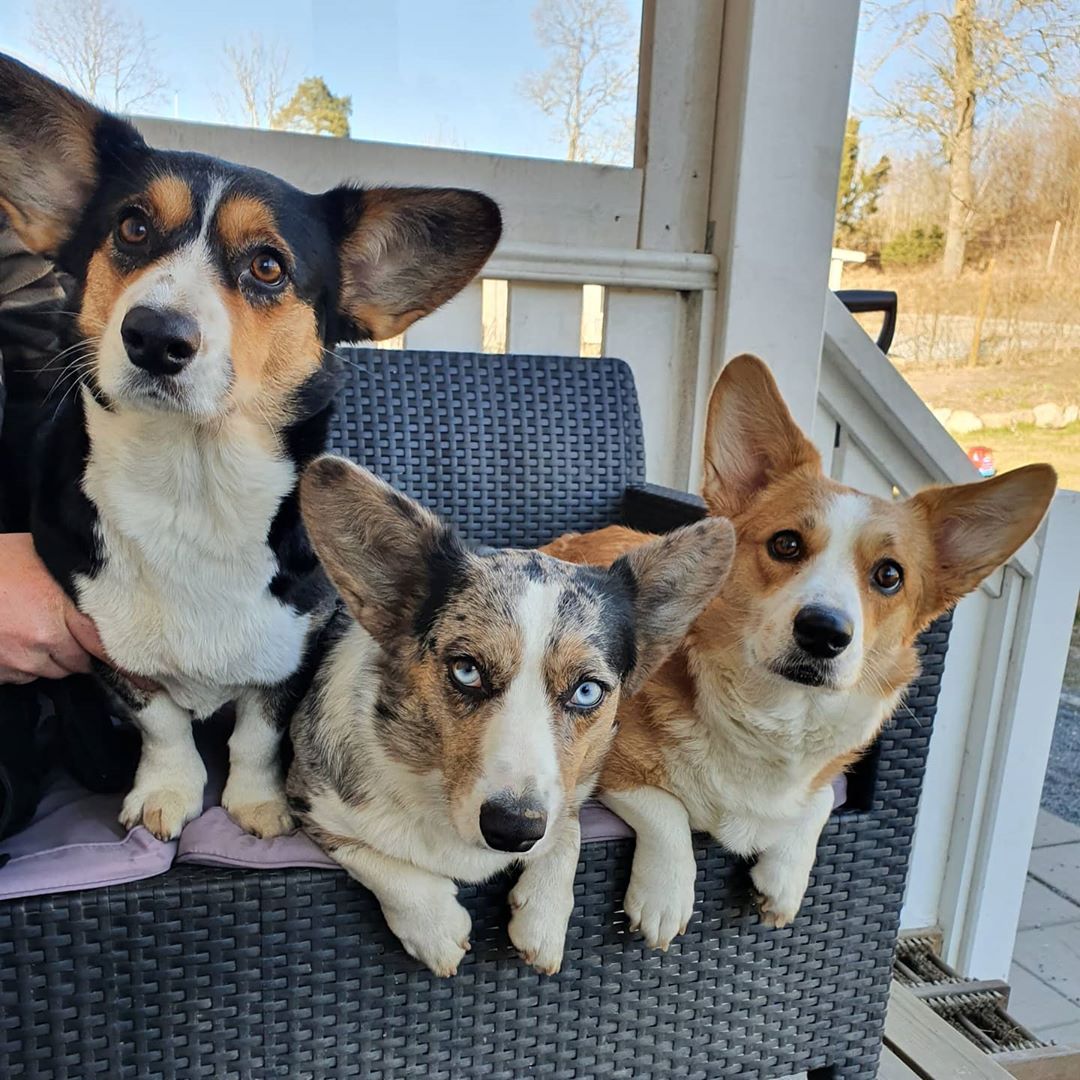
Initially, the dog’s job was to prevent the animal from fighting off the herd, and she could do this only in one way: by lightly biting a cow or calf by the leg. Not surprisingly, the herbivore responded with a hoof to the forehead. And since the Welsh Corgi cardigan has always been extremely low fit, the cow invariably misses.
Welsh Corgi cardigans are agile, long-bodied “gentlemen” with a soft topline and miniature, sturdy legs. Outwardly, these squat, handsome men are noticeably larger and bonier than the Pembroke Welsh Corgi. As an example: the average Pembroke weighs 10-12 kg, while the bodyweight of the natives of Ceredigion can reach 14-17 kg. In general, there are much more differences between these two breeds than it seems at first glance. So, for example, dachshund genes predominate in the cardi, so they have slightly curved legs, a massive chest, and a smoother silhouette line.
Welsh Corgi Cardigans are hard-working dogs, bred not for exhibitions, but gray working days. It is not surprising that the Pembrokes, who were born a little later and were the “product” of crossing the Spitz with the Welsh Corgi, is inferior to them in performance and endurance, but they win in terms of external charm.
An interesting fact: until recently, the cardigan could be identified by the lush foxtail, which was traditionally shortened by the Pembrokes. However, after European breeders abandoned docking, it became more difficult to distinguish between animals. However, if you look closely, you will notice that the shepherd dogs from Pembrokeshire have a shorter tail (long-term crossing of short-tailed individuals with tailless ones made themselves felt) and less luxurious.
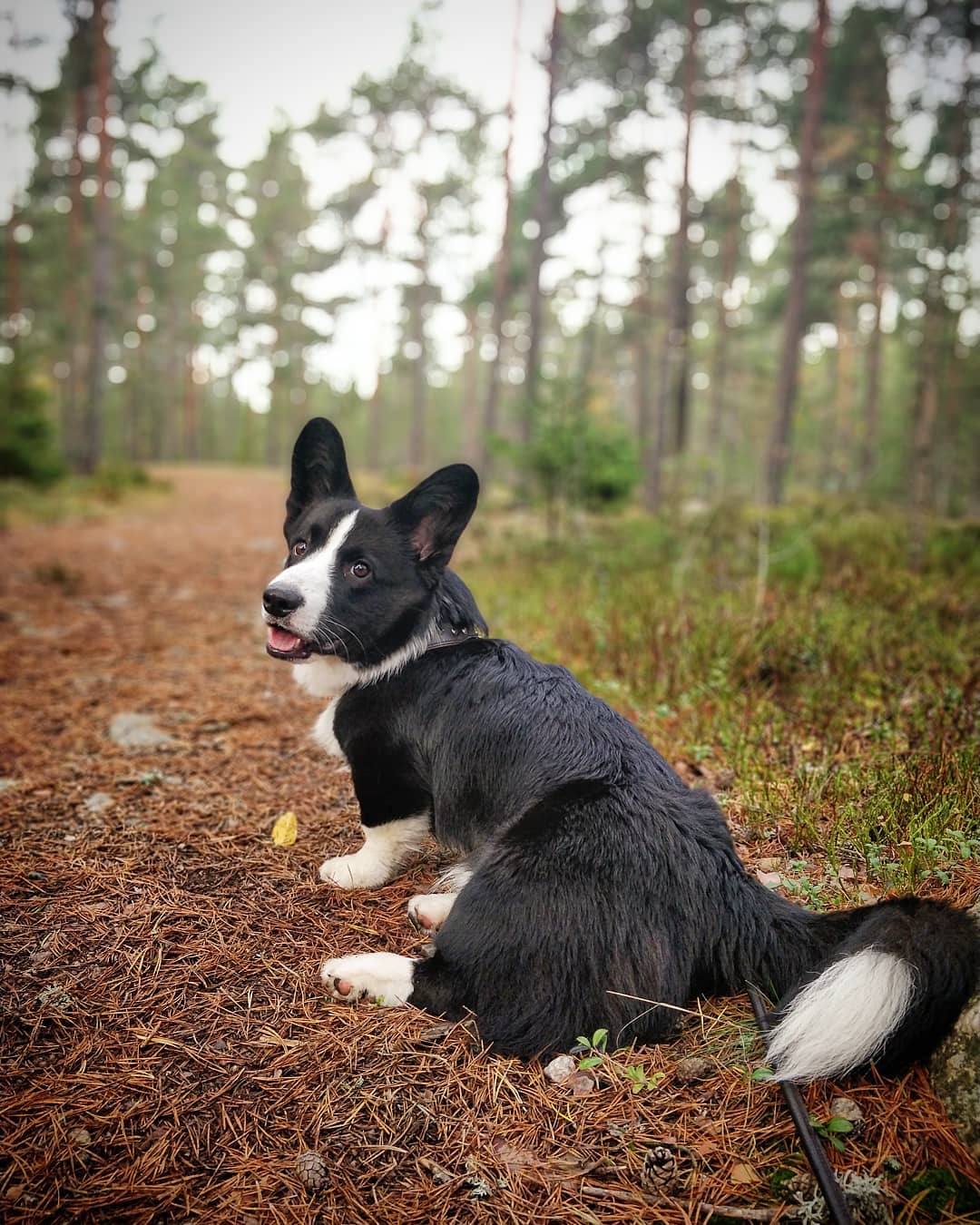
The welsh corgi cardigans have a very proportional head with a moderately elongated muzzle and a wide, narrowed skull towards the eyes.
The jaws of the cardigan welsh corgi are strong, strong, with a scissor or horizontal bite (the first option is preferable).
The nose is black, not too large, but not miniature either.
Shepherd’s eyes are set wide, with well-defined angles, not round. The shade of the iris is dark. For individuals with marbled coats, blue or bluish-spotted eye color is acceptable.
The Welsh Corgi Cardigan has large, erect ears with rounded tips, which are tilted forward in the alert dog, and slightly apart in the resting state.
The neck of decent length, muscular, turning into relief shoulders.
The body of the cardi should belong, with a well-defined loin line, without bulging or sagging.
Even though the legs of the representatives of this breed give the impression of a toy, they have sufficient strength and provide a good push when running. Legs of welsh corgi cardigans are large, rounded, with puffy pads. The front legs are slightly turned outward, which is especially noticeable when viewed from the front of the dog.
The correct tail for a welsh corgi cardigan is a low set, pulled down. In an excited dog, the tail may be slightly raised (the best option is to the level of the croup or slightly higher), while it should not curl up into a donut and be thrown onto its back.
Smooth, tight-fitting “fur coats” of welsh corgi cardigans are formed by moderately coarse hair of medium length and a thick layer of undercoat. The dog’s coat should be smooth, but not silky, and certainly not as stiff as wire. A shepherd dog whose coat is too fluffy and soft is considered defective and is called a fluffy.
The breed standards are less demanding for the color of the coat of cardigans than for the color of the Pembrokes. Simply put, this Welsh Corgi is eligible for any type of coat, including brindle and blue merle. The presence of white marks on the body is not punished by exhibition specialists either. The main thing is that they do not dominate the main shade.
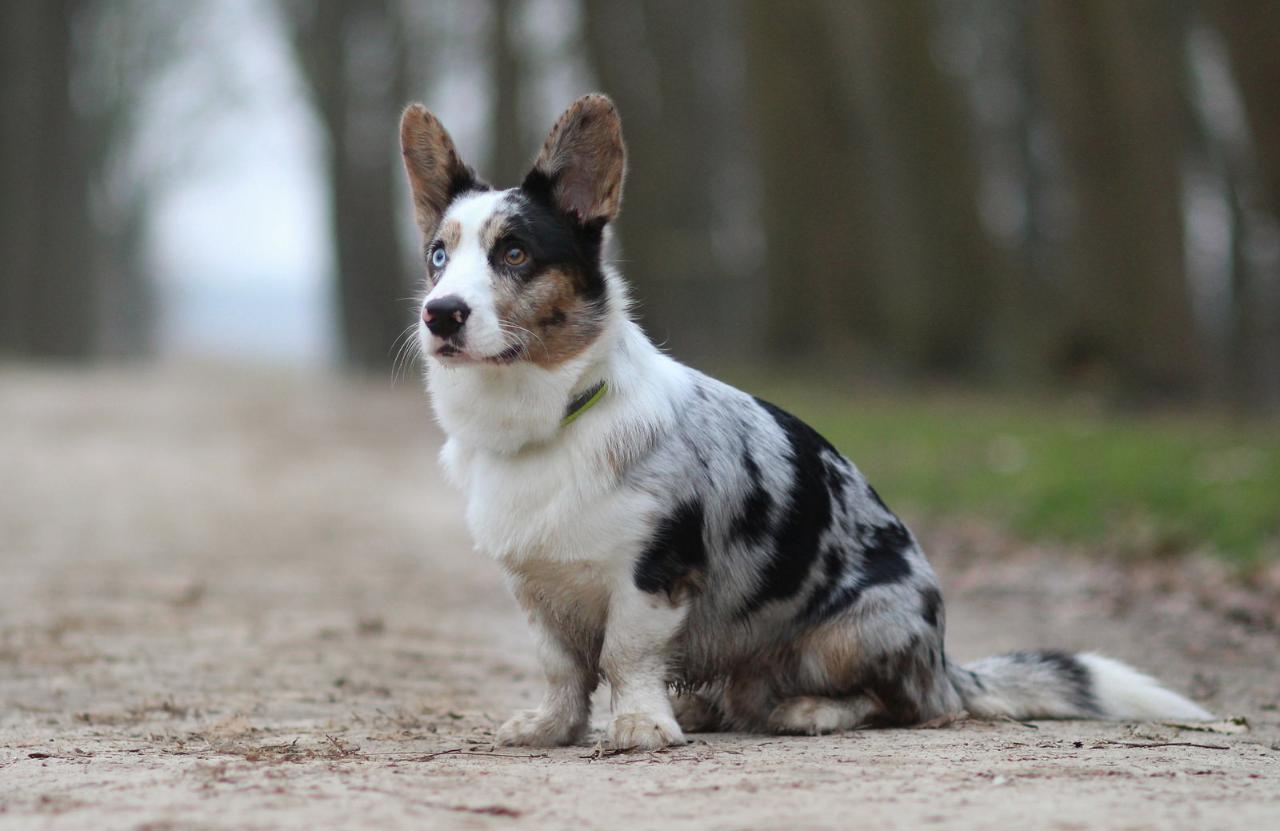
Disqualifying vices
- Drooping or drooping ears.
- White spots on the body, prevailing over the main color.
- Completely blue or irregularly colored iris (not valid for marbled specimens).
- Lobe of any color other than black.
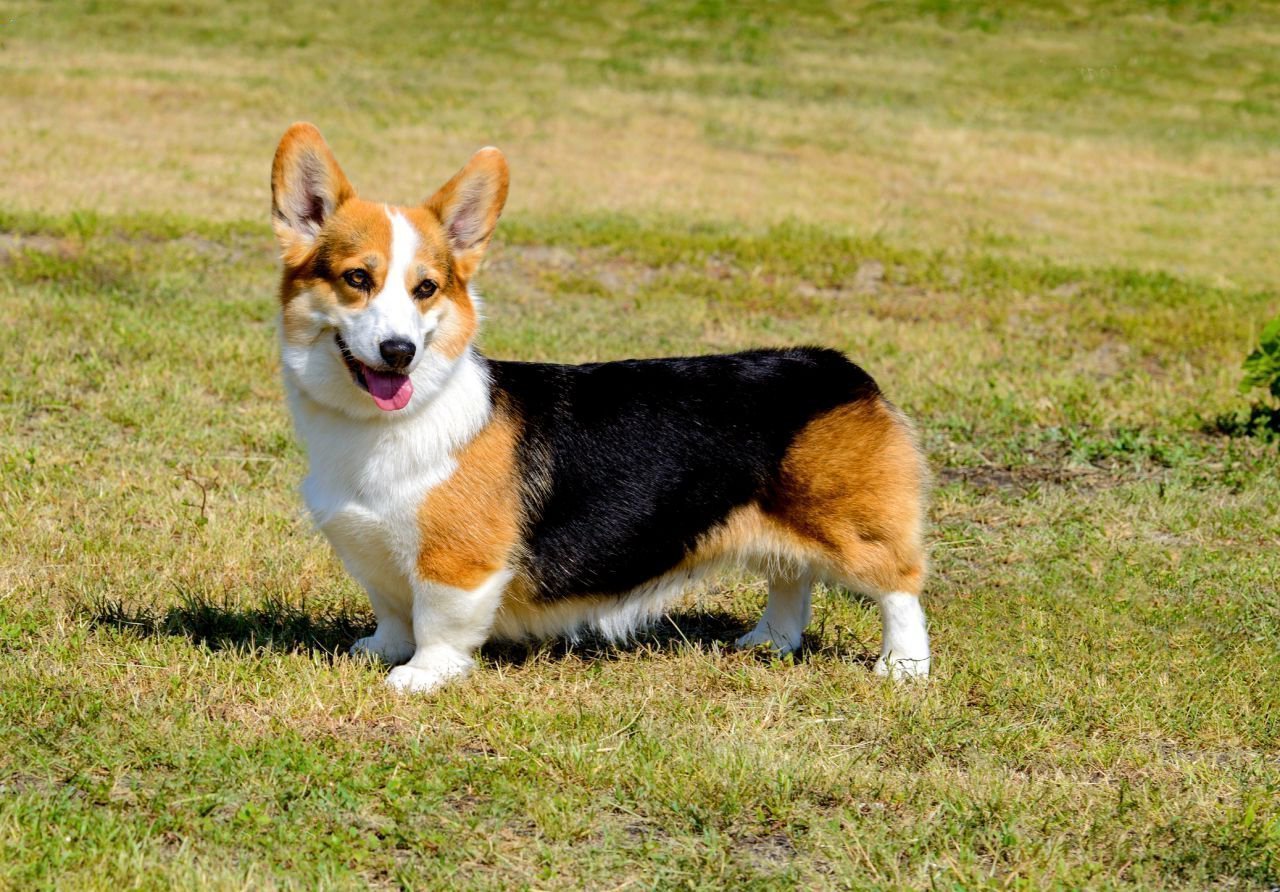
Calmness, bordering on light phlegm, good nature, an excellent sense of humor – these are the three main qualities that define the character of Welsh Corgi cardigans. These pretty short-legged ones easily get along with anyone, and they hardly know such a feeling as jealousy. The only thing, unlike the same Pembrokes, Cardi does not really trust strangers and sometimes does not mind barking at them. At the same time, in ordinary life, shepherd dogs, if they are properly brought up, rarely make noise and only for good reasons.
Against the backdrop of impulsive Pembrokes, Welsh Corgi cardigans are restraint itself. They are quite energetic, but not hyperactive, contact, but not intrusive, docile, but not at the expense of self-esteem. The best friends for a dog are members of the family in which it lives, so the Welsh Corgi Cardigan is always happy to play pranks with the kids, lie next to the owner on the couch watching a series or run around with him in the park. In general, cardi is very dependent on their own owner, but you should not associate this feature with a lack of intellectual abilities. In fact, welsh corgi cardigans are smart and astute creatures, just for centuries working side by side with a person, they have practically lost the desire for independence. But these sympathizers are not characterized by ambition, and they will never try to put themselves above the owner.
Even though today’s Welsh Corgi Cardigans have practically said goodbye to herding, the instincts of their ancestors, no-no, will remind of themselves. In particular, modern cards now guard not cows and lambs, but family members. This is especially evident in relationships with children. A kid who has deviated from the desired trajectory and gone beyond the boundaries existing in the dog’s imagination will be lightly nibbled on the legs. From the outside, it looks funny, but it is better not to forget that while you are laughing and filming the “great confrontation” on video, the Welsh Corgi Cardigan perceives this as a reward and will try and bite even more the next time.
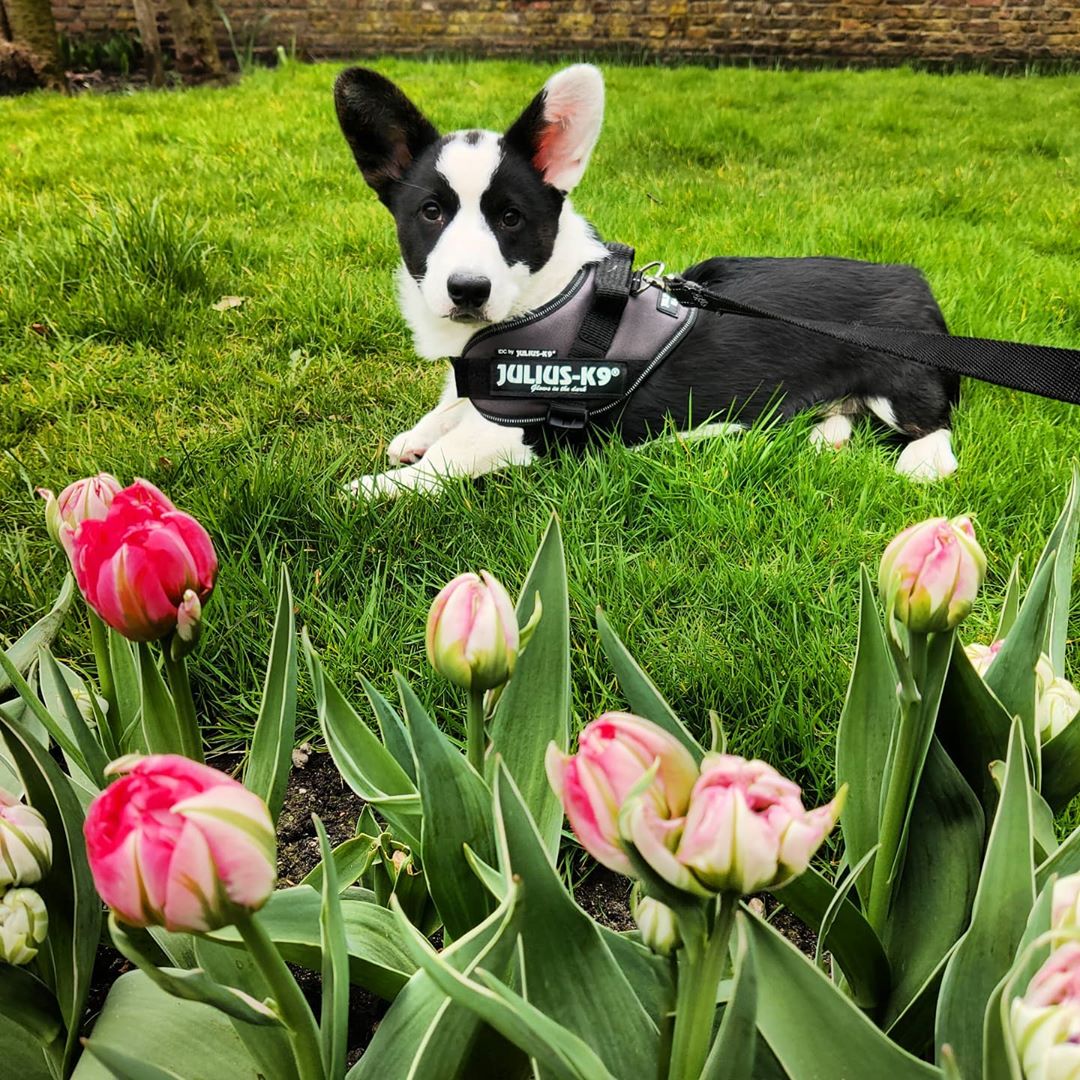
In studies, Welsh Corgi cardigans show themselves from the most positive side. The main thing is not to overdo it with seriousness and monotony. Due to their moderately lively temperament, cardi is happy to learn what is presented to them in a relaxed, entertaining way and quickly loses interest in commands and actions that imply dull fulfillment of the master’s requirements. Do not forget that the Welsh Corgi Cardigan is a highly specialized shepherd’s shepherd dog, which is absolutely not intended for service and security activities.
Begin to educate and socialize the puppy from the first minutes of his appearance in your home, and not at the age of 6 months, as would-be experts from Internet forums advise to do. The education of a 2-month-old baby is lined up in approximately the following sequence:
- familiarity with home toilet (tray, diaper) and the ability to use it;
- leash and collar training;
- fostering obedience and setting the boundaries of what is permitted.
At 3 months old, the puppy can and should be introduced to the world around him so that he does not get the impression that he is the only four-legged creature on the planet. To do this, walk more often in places where other animals (cats, dogs) run, and also arrange meetings with people for your pet. At the same time, clearly explain to the baby that now the toilet for him is not only a tray and a diaper but also the nearest bushes.
At 4-5 months, the Welsh Corgi Cardigan is smart enough to learn the minimum set of commands: “Near!”, “Sit!”, “Lie down!” In addition, a 4-month-old puppy should understand that barking for no reason is the height of bad manners, and picking up foreign objects from the ground, even if they smell seductive, is an activity unworthy of a real Welsh Shepherd.
In the process of training half-year-old individuals, take into account the peculiarities of the transitional age. During this period, the welsh corgi cardigan may deliberately disobey you and pretend to be incomprehensible. This breed is not prone to dominance, but a 6-month-old puppy will definitely try to bargain for some indulgences. In addition, he may start to spoil his shoes again, although three months ago he showed complete indifference to such things.
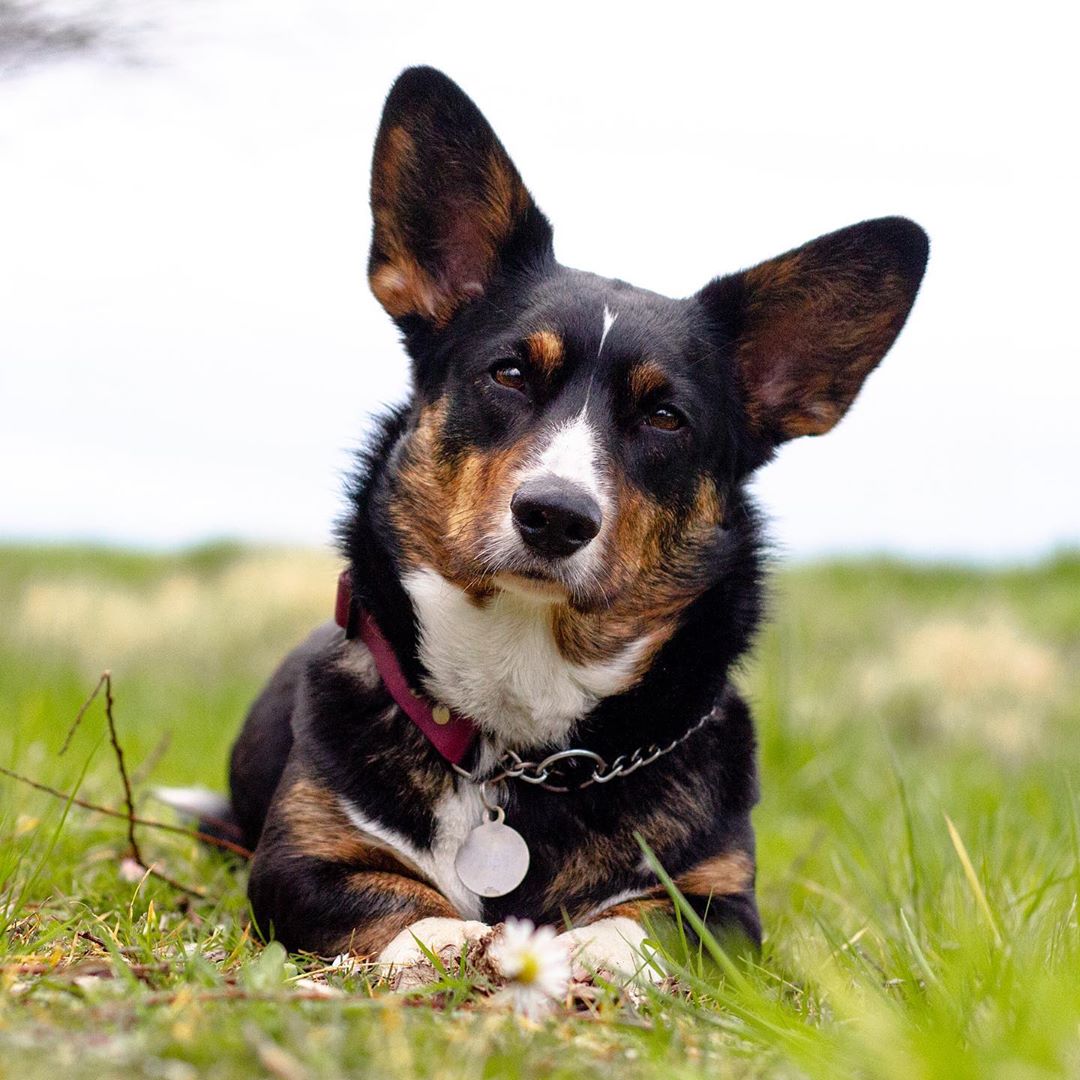
Like any shepherd dog, the Cardigan Welsh Corgi will certainly prefer a country house with a lawn to the most comfortable apartment. On the other hand, if you settle a representative of this breed in a modest kopeck piece, he will not be offended at you, provided that you are not too lazy to go with him to the park or pick mushrooms in the nearest grove a couple of times a day.
When arranging a corner for a dog in a house or apartment, take into account the anatomical features of the breed. For example, a welsh corgi cardigan mattress should be strictly orthopedic, and a food bowl equipped with an adjustable stand so that the animal does not have to bend over too much.
The smooth, harsh coat of the Welsh Corgi Cardigan has dirt and water repellent functions, so it is better not to overuse full bathing with this breed. It is recommended to arrange bathing days no more than once every three months (if you do not have a show dog), and to select shampoo for washing especially for coarse hair.
Welsh corgi cardigans shed intensely twice a year. Particularly impressive is the scale of the first adult “wool pad” of a teenage puppy, often plunging the inexperienced owner into a state of shock. Do not be afraid of this: with age, everything will settle down, and the cardigan will shed no more and no less than the average shepherd dog. As for the daily care of your pet’s hair, an arsenal of combs will help you. A massage brush, a rake slicker, a comb with long teeth – you will have to spend money on these items already because the representatives of this breed will have to be combed daily. In addition, once a week, the cardi is also supposed to work out the undercoat well.
Ears are cleaned as needed with good old veterinary lotion and cotton swabs. But the claws of the welsh corgi cardigans will have to be cut more often (optimally – 2 times a month) since they grow quickly and often exfoliate. Do not throw away such an unpleasant procedure for both the owner and the dog as brushing your teeth. But it is better to carry it out as carefully as possible since the teeth of the shepherd dogs are very sensitive.
The Welsh Corgi Cardigan is an energetic and agile dog, but even its internal “battery” has its limit, so do not bring your pet to exhaustion with daily training. The optimal exercise option: walks at a lively, relaxed pace twice a day and three times a week, agility, freestyle, or just active games in the fresh air.
In the summer, you will have to look for a shady place for walking, since due to too thick and dense wool, cardi can overheat in the sun. In the off-season, another problem comes up – dirt accumulating on the dog’s belly during walks (thanks to the short legs). So if you don’t want to drag your ward to the bathroom after each goes out, sew a custom-sized raincoat for him – in pet stores, the range of clothes for this breed is extremely poor.
When choosing four-legged friends on the playground for your Welsh Corgi Cardigan, make sure that these are medium-sized dogs. The fact is that cardigans are very bold by nature, and in the event of a conflict, the size of the enemy does not hold them back at all. Accordingly, if your ward walks in the company of a “Caucasian”, you run a big risk, since for a wolfhound such a short-legged is an annoying misunderstanding that can be easily removed from the path with one click of the jaw.
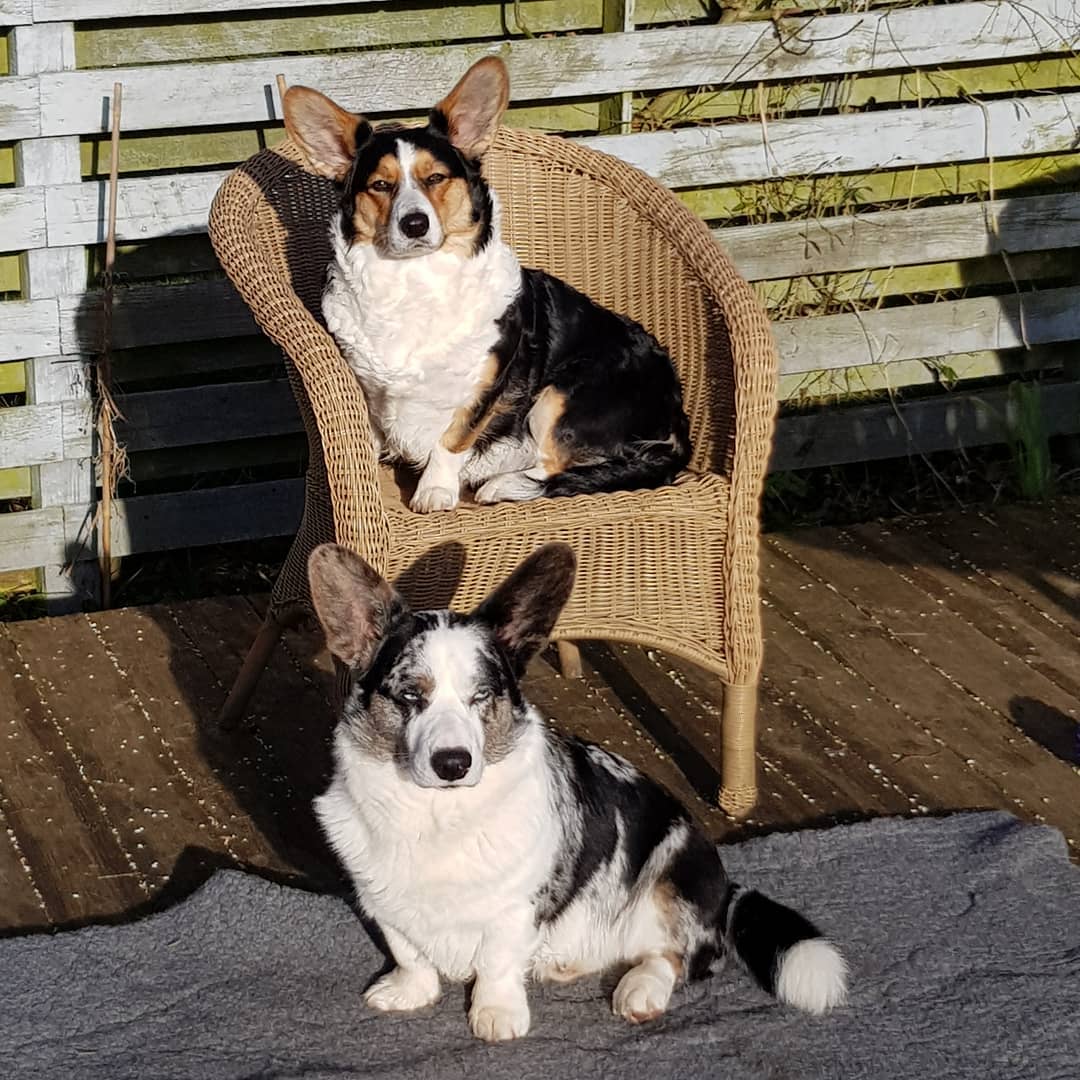
Welsh Corgi cardigans are happy to absorb dry food, so if the owner has neither the time nor the desire to engage in the preparation of a balanced diet for his pet, this option can help out quite well. However, in some cases, the dog’s body can react to the store “drying” allergies, a change in coat color (white hair becomes pink), and intestinal problems.
With natural food, things are easier. Feed the cardigan with lean frozen meat at the rate of 20 g of product per kilogram of the dog’s body weight, as well as liquid cereals cooked in meat broth, and your ward will be healthy and happy. Just don’t overdo it, because welsh corgi cardigans are still gluttons who love to overfill their stomachs and ask for more.
Foods that should be included in the diet of the welsh corgi cardigan:
- low-fat kefir, fermented baked milk, cottage cheese;
- vegetables (carrots, zucchini);
- apples;
- vegetable oil (as an additive, but not more than 1 tbsp. l. per day);
- rice and buckwheat groats.
1-2 times a week, the cardigan menu can be diversified with offal, boiled chicken, fish fillets, eggs, and bread crumbs.
Prohibited:
- tomatoes, eggplants, grapes;
- mushrooms;
- bakery products;
- nuts;
- sausages;
- sour cream and any fatty fermented milk products;
- millet and semolina;
- bird bones;
- pasta;
- sweets.
One of the breed’s weakest points is its teeth, which are often affected by periodontal disease. The metabolism of the Welsh Corgi cardigans is also not the most outstanding, so they often overheat and, as a result, quickly gain weight. As for genetic ailments, there are few of them in shepherd dogs. Basically, animals inherit from their parent’s eye diseases (cataracts, dislocation of the lens, glaucoma, keratitis), as well as dysplasia of the hip joints. Among other things, the Welsh Corgi cardigans have a predisposition to food allergies and various kinds of eczema.
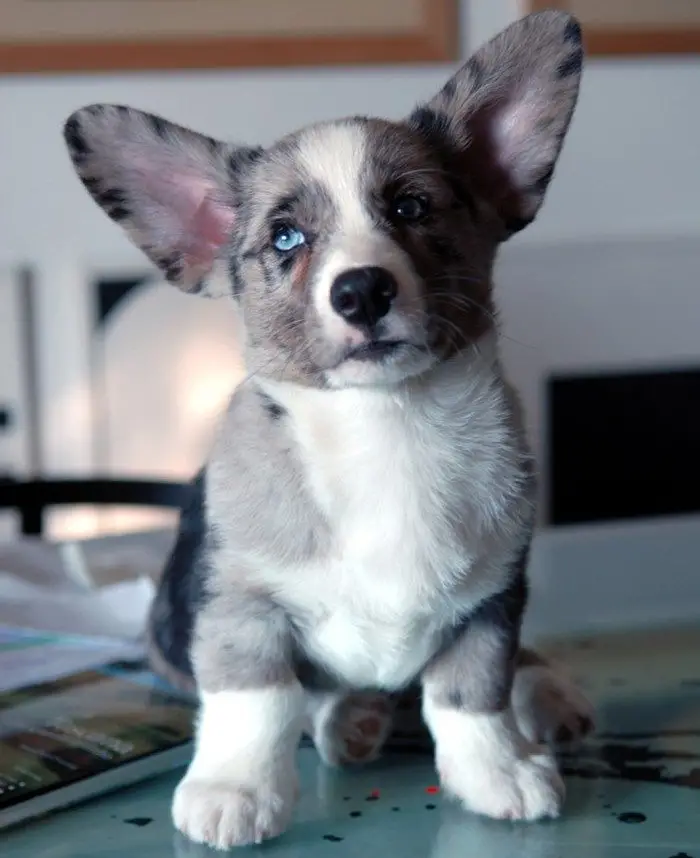
How to choose a puppy?
Welsh Corgi cardigans are somewhat inferior in popularity and demand to Pembrokes, so there are not many nurseries engaged in their breeding. Take this fact into account and approach the choice of a pet carefully, armed with a standard of appearance, or even better, with the support of a specialist from the cynological association.
When choosing a cardigan puppy, we recommend that you follow several rules.
- Welsh corgi cardigan males are more trusting and efficient and are more willing to learn. Females are more cunning and flexible, so it is easier for them to adapt to the mood of the owner.
- Cardi inherits the athletic ability of their parents, so if you need a future agility champion, ask the breeder for the working diplomas of his ancestors.
- Responsible breeders usually test for dysplasia in a female and a dog that they plan to mate. Play it safe and ask the seller for test results to protect yourself from buying a puppy with poor heredity.
- The optimal age for selling/buying a Welsh Corgi puppy is 8-12 weeks. Even though kennel clubs are allowed to put up 45-day-old babies for sale, self-respecting kennels do not use this privilege, preferring to keep the dog with them a little longer so that it receives the necessary vaccinations and gets stronger.
- It is best to take puppies in kennels that practice country breeding. This means that little ones will not be locked in cramped cages and will have enough room to play and develop.
Remember: experienced breeders and kennels take the sale of their wards very seriously and rarely offer bargaining or puppies for reservation. The seller’s offer to “negotiate” about the cost is an alarming signal because such concessions are usually made if the dog has serious defects that you have not yet had time to discern.

